Today, Tuesday, March 26, 2024, Free the Fern was happy to be able to partner with Wild Outside to run a Youth Invasive Pull Event. Wild Outside is a youth branch of the Canadian Wildlife Federation.
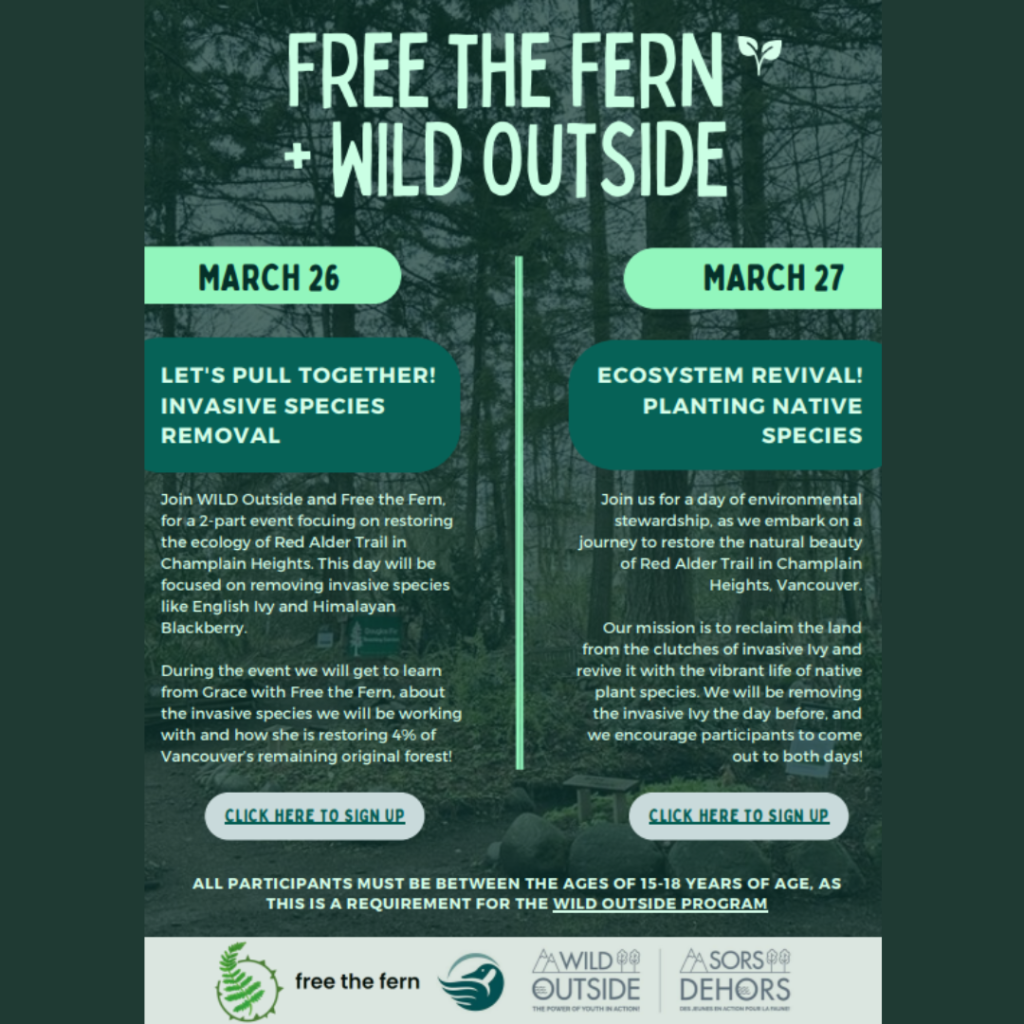
Wild Outside leaders, Laura and Emma, arrived early to help set-up for the event. Free the Fern Executive Director, Grace, was suprised when they presented her a large box of juice and snacks. This was a generous act of gratitude for partnering together. Wow! These snacks will be enjoyed by our Free the Fern volunteers at future Free events for months to come! Thank you so much to both of you for your kindness!
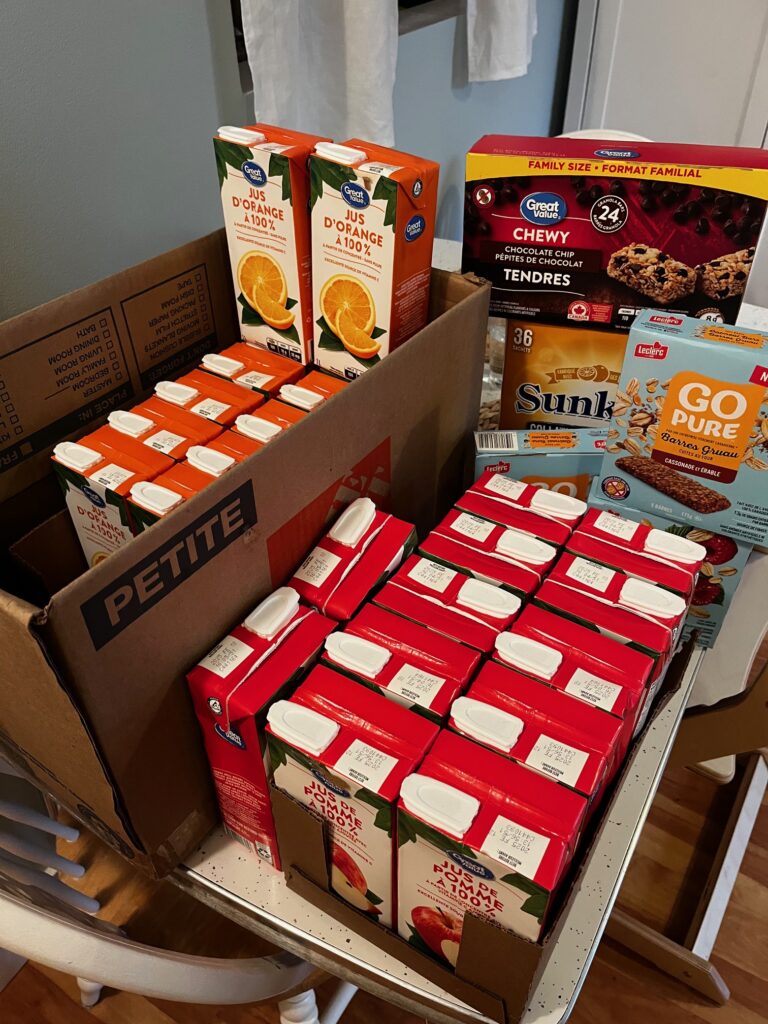
At 10am, four eager 15-18 year olds gathered at the Douglas Fir Teaching Garden. Everyone gathered together to connect with an ice breaker and a fun activity where they created “most wanted” posters for common invasive plants. Very creative!
The youth then got to work helping to clear ivy from an area of the Red Alder trail, adjacent to the Douglas Fir Teaching Garden. Together, they succeeded in removing 500 L of ivy!
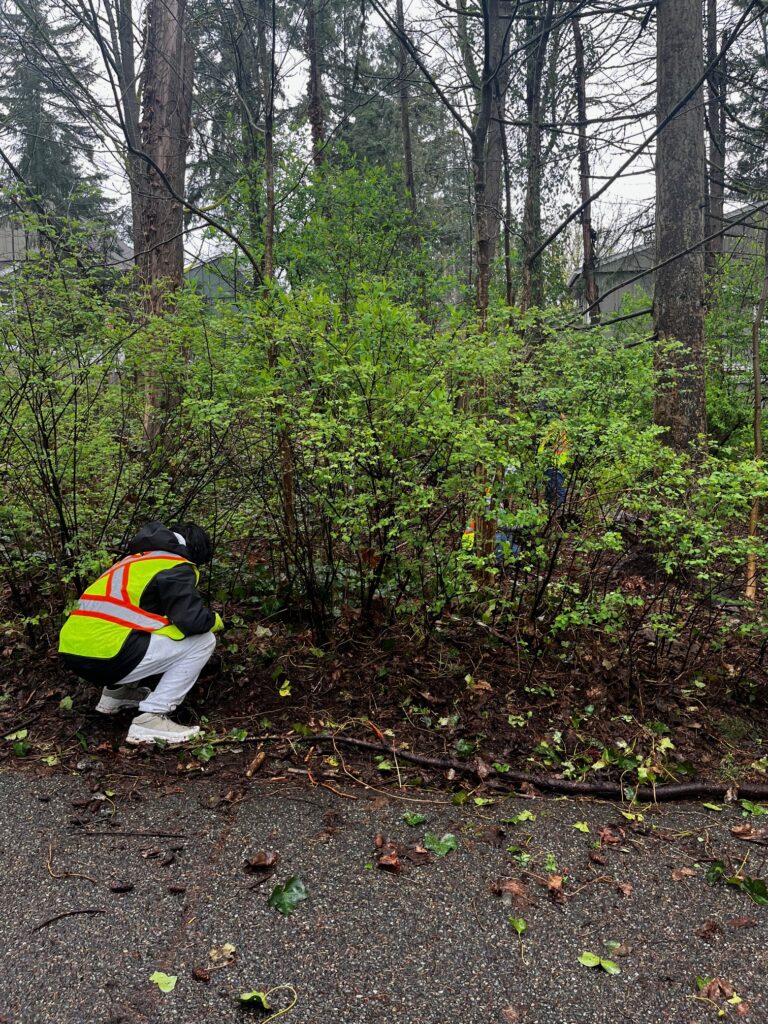
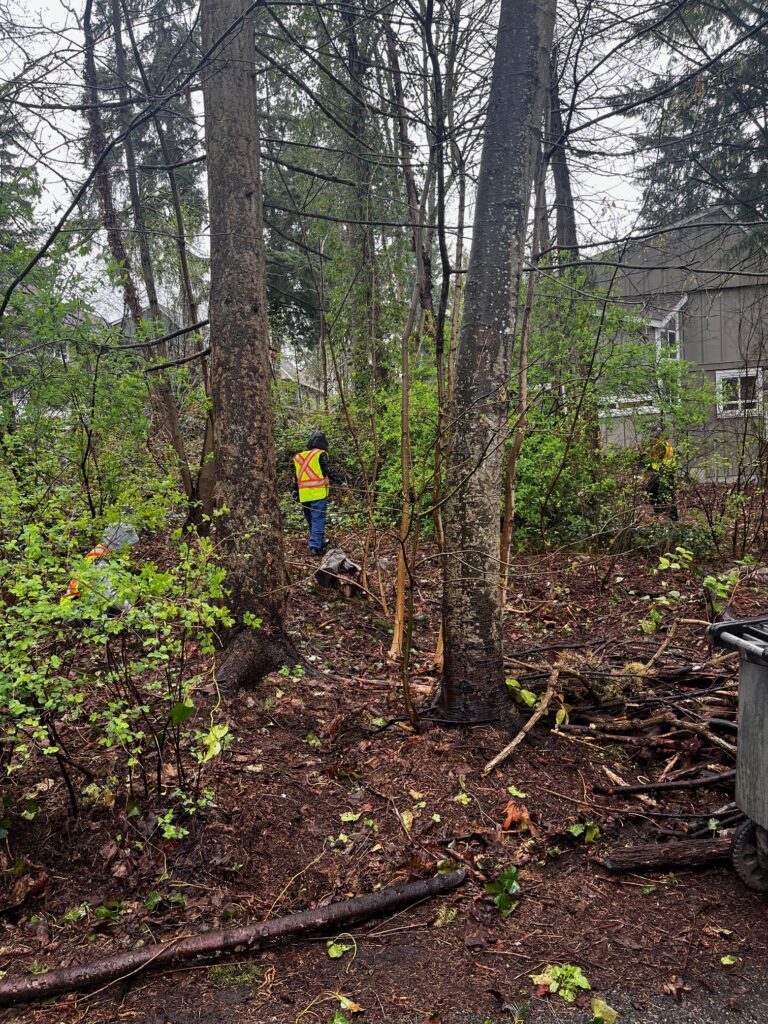
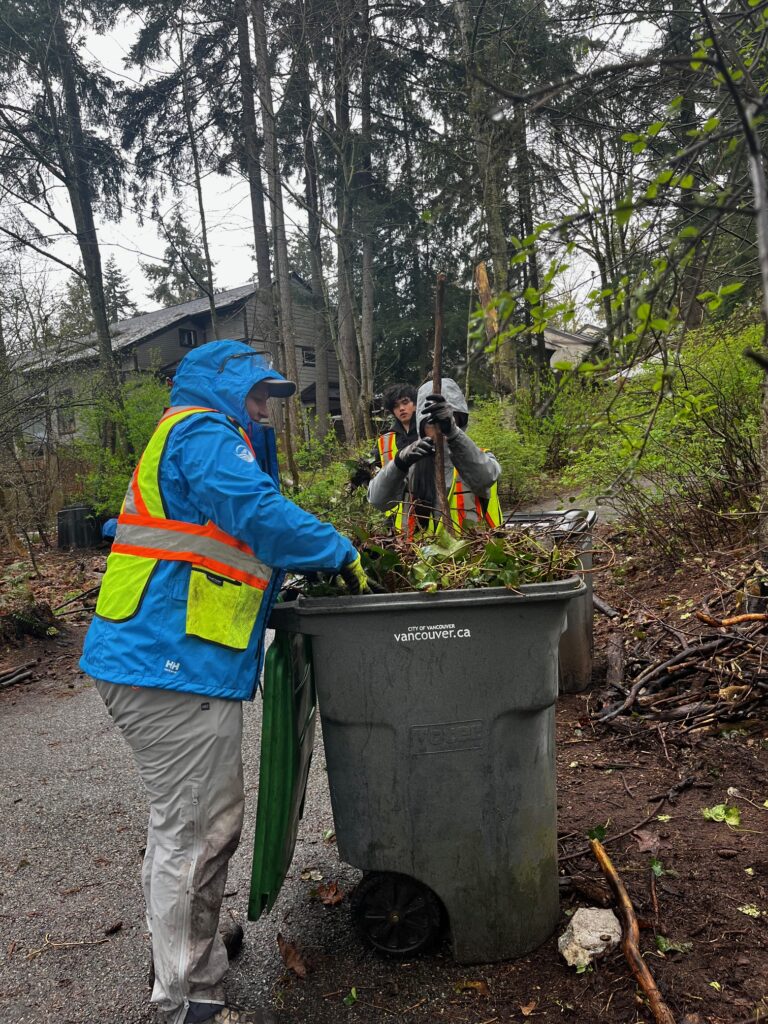
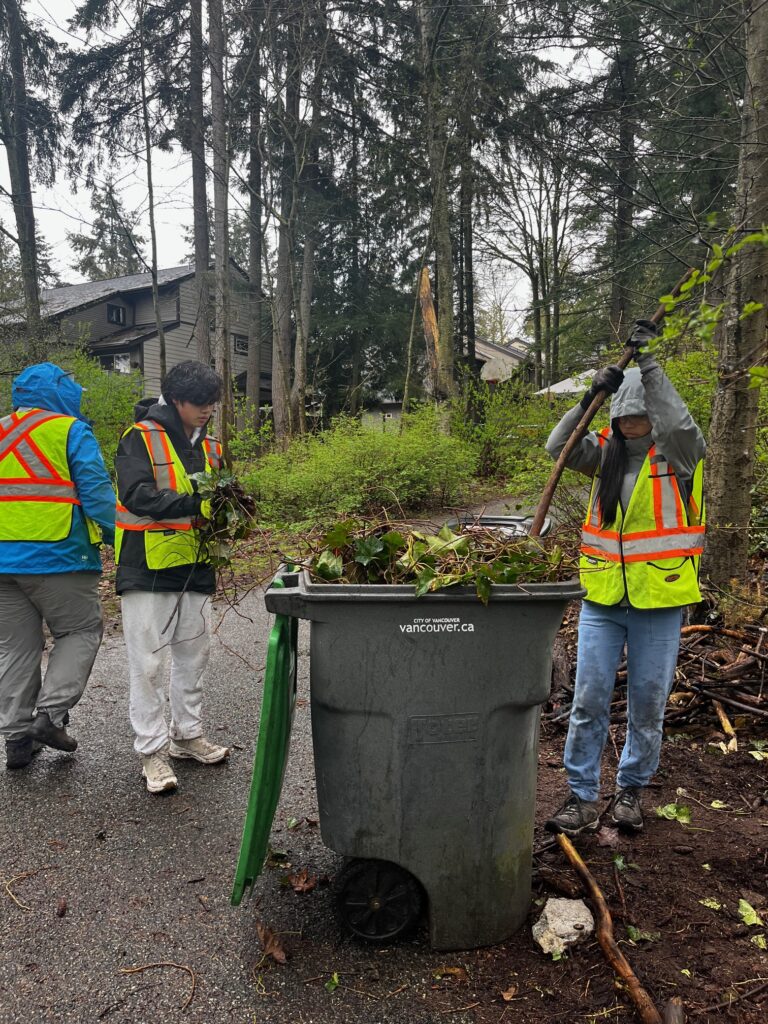
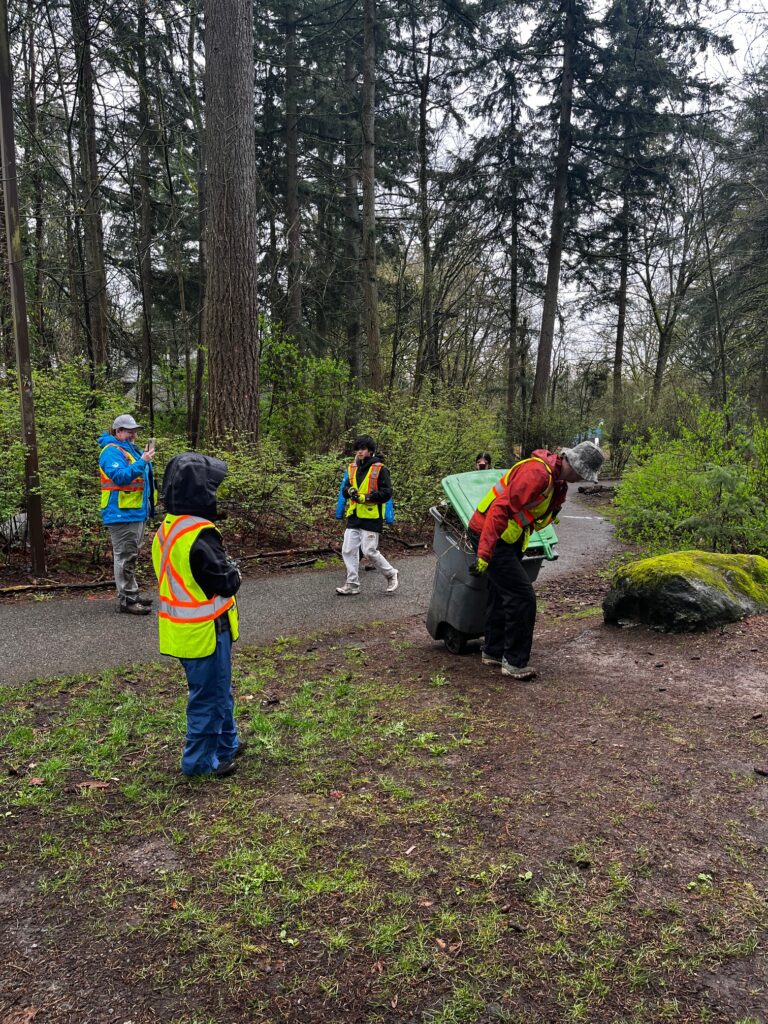
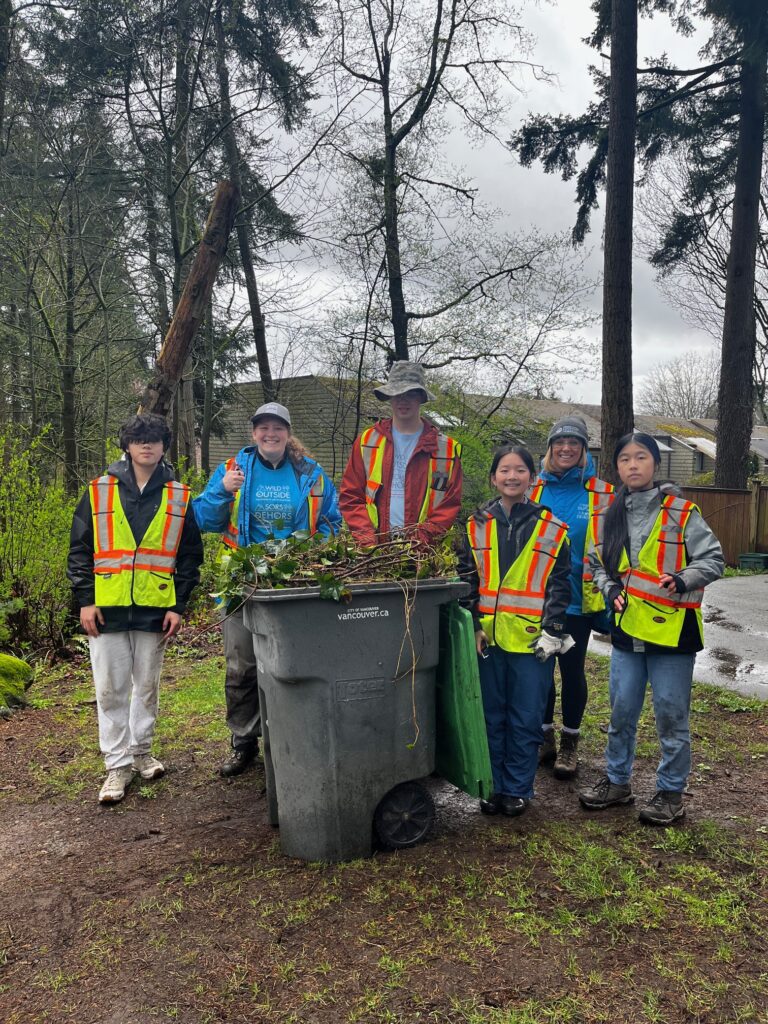
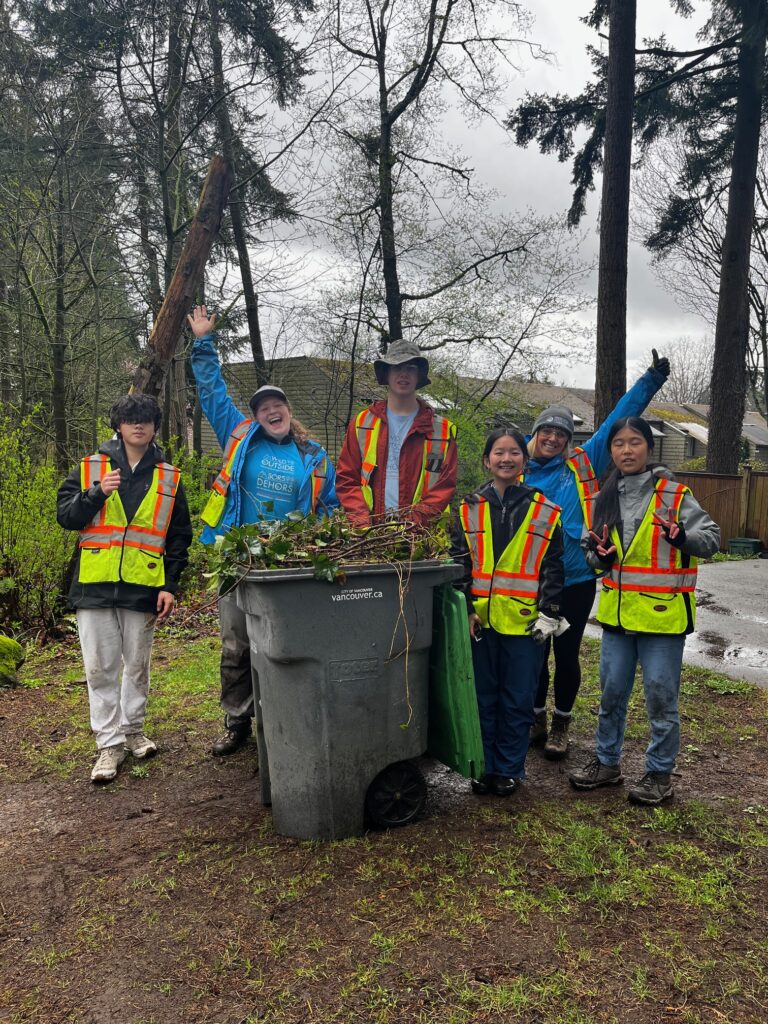
Unfortunately, it was quite heavy rain while they were pulling, so they leaders decided to cut the scheduled day-long event into a shorter morning event.
But, before they packed up, Free the Fern Executive Director, Grace, led them all on a educational walk and talk down the trail.
Grace pointed out six invasive plants:
- Ivy: Which can climb and smother a tree, blocking sunlight and air and ultimately killling the tree.
- Black locust: An invasive tree, in the legume family, that spreads rapidly by seed and new shoots that sprout from its roots.
- Common periwinkle: A common landscaping plant purchased for its lovely purple flowers. Unfortuantely, it has escaped captivity, spreading as a dense ground cover on the forest floor
- Wild Chervil: an edible invasive in the parsely family that reeks havock for local farmers and crowds out native plants in the forest.
- Himalyan blackberry: An invasive plant that some people love because of its berries. But, it creates a dense monoculture preventing the growth of native berries, such as thimbleberry, salmonberry, huckleberry, native blackberry and others.
- Daphne: A highly toxic invasive shrub with poisonous leaves, flowers and berries. It also has sap that can irritate and create an excema-like reaction on the skin.
It was great to see the enthusiasm of the youth to steward our local trails. We hope to welcome some of the youth back at our next public invasive pull on Satuday, April 6.
Thanks to Wild Outside for partnering for this youth event!